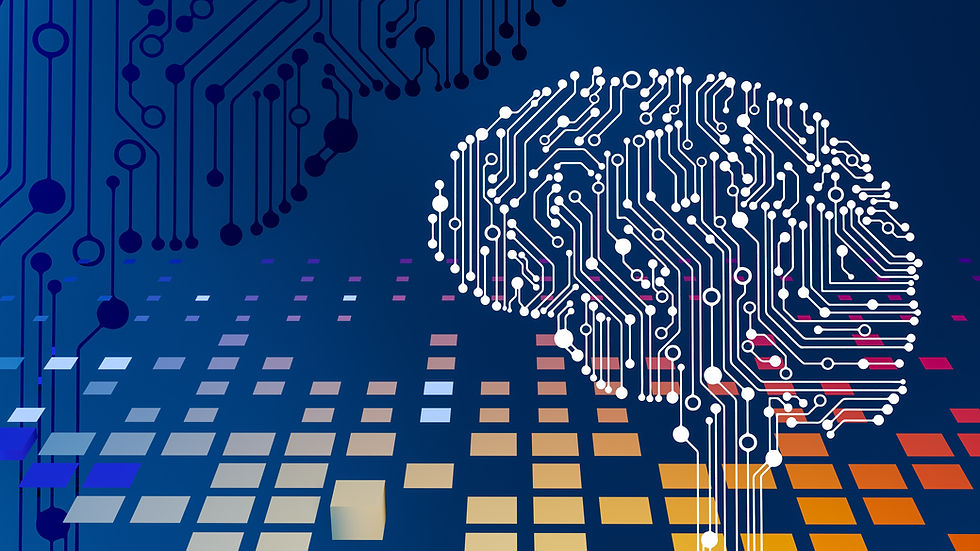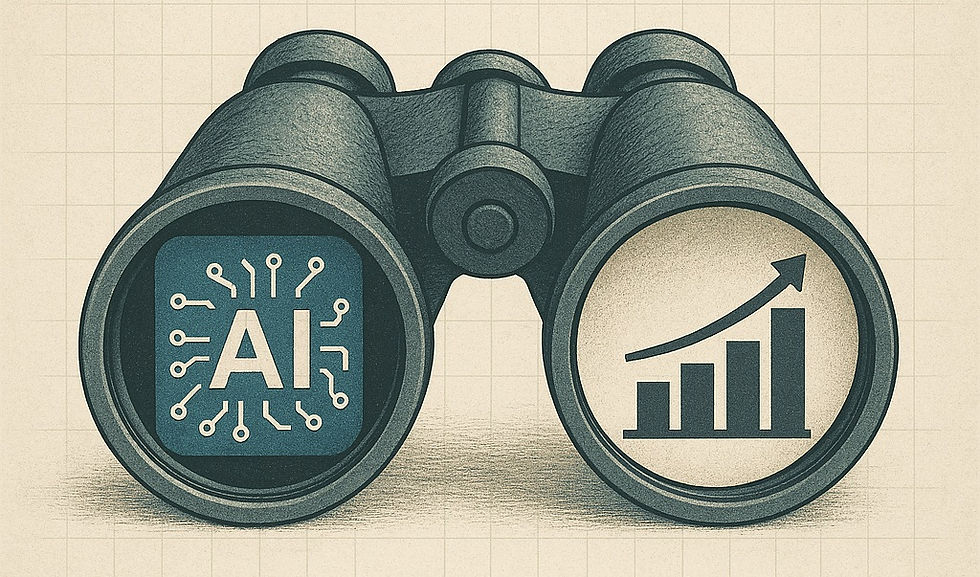In the era of Analytics
- Catherine Louropoulou
- Mar 11, 2022
- 5 min read
Updated: Oct 14, 2022

The new Gold, the new Oil, is called Big Data, and the processes and tools around it are "Analytics". The "data" say that today more people die from the effects of obesity than from the "old" hunger, that fast food, sugary drinks and "bad" food contribute to more deaths than all Al Qaeda victims together! They also show that (new) data analysis methods and tools and the development of predictive models have contributed to the rapid discovery of the Covid-19 vaccine. But as with every other discovery of humanity, artificial intelligence is surrounded by a cloud of misinformation and catastrophism.
Data processing is not a new concept or process, nor is it a trend. In universities, accounting professors - and others in statistics - claim that the familiar company and organisation ledgers are 'graveyards of numbers'. They want to point out that once we throw numbers and entries in there, we tend to forget them forever. Now and then we pull them out for tax and general formality purposes. At the same time, they want to point out the need for the managers of companies and organisations to ask themselves: "Fine, I've recorded the history of the numbers, so what; what conclusion can be drawn from them? Is business going well? Where will we be in the future? What needs to change? And how do my numbers correlate with what's going on around me?"
Big Data Analytics give us the answer
The answer to the above questions, which concern all of those who exercise any kind of Management with no exception, is given by the use of Analytics. Balances, lists, inventory and inventory statements are not enough.
A valuable tool in the analysis toolbox is the familiar to all Microsoft Excel. However, most companies fall into the trap of using this tool by creating static images of data, once, for the purposes of a presentation or a specific study. This process adds considerable cost and time when it needs to be repeated. In response to this problem, Analytics comes along and creates a technological environment that augments the functionality of even a tool like Excel. This allows business executives to continue working with the tools they know or with other more advanced tools (Power BI, Tableau, Targit) giving them analytics capabilities beyond their original design.
It takes special analysis and processing tools
Nevertheless the more we look at business data, the more we put assumptions and scenarios on the table, the more we try to see "what" the data we have in the database say, the more we realize that we want special tools for stochastic analysis and processing. In the natural sciences as well, the more we decode the structure of our brain and our genetic code thanks to biotechnology, artificial intelligence, and Big Data processing, the more authority will be passed to external algorithms and the more people will depend on them.
The "pessimistic" developments say that my smart phone will know "me" better than I and Big Brother will be able to make the best decisions on my behalf. They further predict that there is a danger that democratic elections, the free market and the people themselves will be equally obsolete. If in the 19th century, with the Industrial Revolution, the working class emerged, the pessimists warn that the 21st will create a huge new "useless class," a class of "useless" people with no skills or knowledge.
However, the optimists of scholars note that people now tend to become GOD, that is, to make BEINGS according to their will, to become IMMORTAL, thanks to Bio-engineering. For 70 thousand years of human history, the creations of "God" were ORGANIC. Today, for the first time in human history, humans can make inorganic creations (eg artificial human limbs - Bio-engineered).
And what about businesses? What are the benefits and which are the applications?
Let’s examine some examples.
The balance sheet and financial results, which usually represent a snapshot of a point in time in a company's past, may well be supplemented with Projections and developments for a relatively long period in the future, not just the 3-5 years covered by a typical business plan as taught in MBA schools.
Serving all kinds of customer needs and desires, especially in the Services sector, can be tailored to the particular circumstances and requirements and wishes of each individual customer.
Marketing and Sales can very accurately predict and prescribe with a long time horizon, the necessary specifications of products and services that a company is required to offer to the market, to determine the appropriate pricing policy, to adjust with automatic (i.e. automatic feedback) procedures to the market on extraordinary circumstances..
Financing will be more flexible and more sensitive to the environment and the sustainability of the required funds. Interest rates of loans will take into account the profile and long-term compliance of the borrower with environmental and climate standards. Cost of money will decline and returns on investment will rise if the business demonstrates that it is and will be sustainable for the life span of the investment in new technologies and innovative products.
Each manager is expected to act actively and creatively
We already live in the era of Analytics. Telemedicine, or smart agriculture, robotics in financial transactions, logistics route forecasting, are now routine functions. 90% of trading in major stock exchanges is done by computers and systems that "decide" without human intervention.

Each manager is expected to detect those issues and solutions that concern them. And to wait for them to happen actively and creatively.
At E-ON Integration, we dedicate a large part of our resources every day to the modernization of data structures for both E-ON services and our customers. Our primary purpose is to build data streams and to assemble them into data warehouses from any source (system databases, excel, files, images, etc.). These data are then analyzed by Data Scientists and findings and estimates are extracted which can be divided into the following categories:
Descriptive analysis: Describes what has happened in a given period of time. Has the number of views of an ad increased? Are there more sales this month than last month?
Diagnostic analysis: Focuses more on why something happened. This involves more varied data inputs and some hypotheses. Did the weather affect beer sales? Did this latest marketing campaign affect sales?
Predictive analysis: Analyses what is likely to happen in the near future. What happened to the discounts the last time we had a hot summer? How many weather models are predicting a hot summer this year?
Prescritive analysis: Indicates a course of action. If the probability of a hot summer measured as the average of these five weather models averages amounts to over 58%, we should add a night shift at the brewery and rent an additional tank to increase production.
In all of the above, the ultimate goal is to create artificial intelligence models, using machine learning techniques, which will be able to answer these questions automatically, without human intervention. Once this is achieved, the next step is to integrate these models into production systems that will make intelligent decisions such as increasing or decreasing the budget of an advertising campaign.




Comments